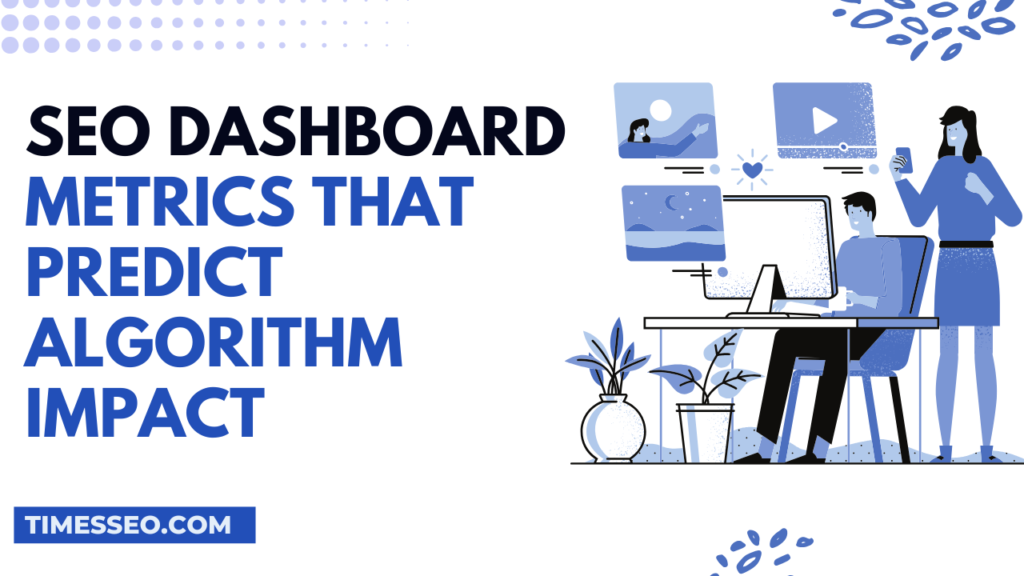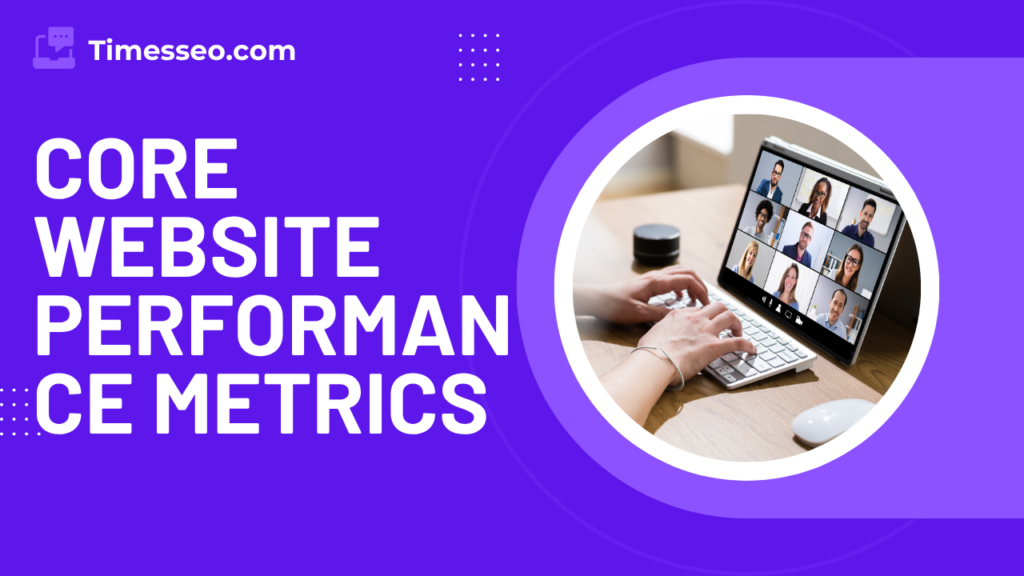
SEO Dashboard Metrics That Predict Algorithm Impact
Discover how to track the right SEO dashboard metrics to anticipate Google algorithm changes before they impact your rankings. Learn which performance, visibility, and engagement indicators matter most, and how to use them for proactive SEO success.
Table of Contents
Introduction
“Google’s at it again!” is a phrase you’ve undoubtedly heard if you’ve been in the SEO industry for more than five minutes. Algorithm updates can be sneaky—one day your site’s flying high, and the next, your rankings are on vacation without you.
The secret weapon? SEO dashboard metrics that can help predict these changes before they wreck your traffic.
Why Monitoring Metrics Matters for Algorithm Updates
Google isn’t just looking for keywords—it’s analyzing user behavior, site performance, and content quality. By watching the right metrics, you can spot patterns that often come just before an algorithm shake-up.
Core Website Performance Metrics
Organic Traffic Trends
A sudden dip in organic traffic could be your first warning sign. If you see a decline across multiple top pages at the same time, it might mean Google’s testing a new ranking signal.
Keyword Rankings Volatility
Your keyword rankings are like a heartbeat—steady is good, but erratic jumps mean trouble. Tools like SEMrush, Ahrefs, or Google Search Console can help spot unusual ranking shifts.
Click-Through Rate (CTR) Shifts
CTR drops can signal that competitors have stolen your SERP real estate—maybe with a featured snippet or a more enticing title tag.
Bounce Rate & User Engagement
If people are landing on your site and leaving faster than you can say “meta description,” it might be a relevance issue.
Pages Per Session
More pages per session usually indicates that your material is interesting to visitors.
Average Session Duration
Search engines may respond favorably to a longer average session duration.
Technical SEO Metrics
Core Web Vitals Performance
Google’s Page Experience update made Core Web Vitals a ranking factor.
Largest Contentful Paint (LCP)
Measures loading speed for the main content.
First Input Delay (FID)
Checks interactivity delay.
Cumulative Layout Shift (CLS)
Tracks unexpected page layout shifts.
Index Coverage & Crawl Errors
If Google struggles to index your pages, your visibility suffers. Errors like 404s, server issues, and blocked resources should be fixed quickly.
Mobile Usability Reports
Since mobile-first indexing, a poor mobile experience can cause ranking losses overnight.
Search Visibility Indicators
Impression Changes in Google Search Console
If impressions take a nosedive while CTR holds steady, it’s often a sign you’re appearing in fewer searches.
SERP Feature Appearance & Disappearance
Featured Snippets
Clicks can be significantly decreased by abruptly removing a featured snippet’s position.
People Also Ask (PAA) Boxes
If your content used to appear in these but doesn’t anymore, it may reflect changing Google intent signals.
Content Quality Signals
Top Landing Pages Engagement
If your top-performing pages suddenly see reduced engagement, the content may no longer meet searcher expectations.
Content Freshness Tracking
Google rewards fresh, updated content. Refreshing your posts could be necessary if your rankings decline.
Backlink Profile Changes
New vs. Lost Links
A sudden loss of backlinks could hurt rankings.
Anchor Text Distribution
Over-optimized anchors can look spammy and trigger penalties.
Competitive Intelligence Metrics
Competitor Ranking Movement
If multiple competitors move up while you drop, it’s likely due to a broader algorithmic change rather than just your site.
Market Share in SERPs
You can determine your position by monitoring your proportion of organic visibility in relation to your rivals.
Predictive Insights & Proactive Actions
Correlating Metrics with Past Updates
By comparing your current metrics with past update periods, you can anticipate similar patterns.
Setting Early-Warning Alerts
Set alerts for major shifts in rankings, traffic, or engagement. This helps you act before the drop becomes severe.
Data-Driven Strategy Adjustments
Use the insights to tweak your strategy—whether it’s updating old content, improving site speed, or building more relevant backlinks.
Conclusion
Updates to SEO algorithms will constantly keep us alert. But by keeping an eye on key SEO dashboard metrics, you can spot trouble before it arrives, make proactive changes, and keep your rankings steady. It’s like having a weather forecast for your SEO strategy—better to carry an umbrella than get caught in the rain.
Frequently Asked Questions
At least weekly, but during suspected algorithm updates, check daily.
Keyword rankings volatility and organic traffic trends are top indicators.
Yes, poor Core Web Vitals can trigger ranking drops after updates.
Not always—technical issues, content changes, or backlinks can also be the cause.
Google Search Console, Google Analytics, Ahrefs, SEMrush, and Rank Ranger.
Table of Contents
Popular Posts
-
 Affordable Technical SEO Audit for Small Business: A Complete Guide26 Jun 2025 SEO Audits
Affordable Technical SEO Audit for Small Business: A Complete Guide26 Jun 2025 SEO Audits -
 How to Get an Affordable Technical SEO Audit for Small Business27 Jun 2025 SEO Audits
How to Get an Affordable Technical SEO Audit for Small Business27 Jun 2025 SEO Audits -
 The Ultimate Local SEO Audit Checklist for Startups28 Jun 2025 SEO Audits
The Ultimate Local SEO Audit Checklist for Startups28 Jun 2025 SEO Audits -
 Local SEO Audit Checklist for Startups: A Beginner’s Guide28 Jun 2025 Affiliate Marketing
Local SEO Audit Checklist for Startups: A Beginner’s Guide28 Jun 2025 Affiliate Marketing -
 Top On-Page SEO Audit Steps for Service Websites Every Business Should Know29 Jun 2025 Affiliate Marketing
Top On-Page SEO Audit Steps for Service Websites Every Business Should Know29 Jun 2025 Affiliate Marketing -
 Technical SEO for WordPress: The Ultimate Beginner’s Guide01 Jul 2025 Affiliate Marketing
Technical SEO for WordPress: The Ultimate Beginner’s Guide01 Jul 2025 Affiliate Marketing -
 The Impact of On-Page SEO Audit Steps for Service Websites on UX01 Jul 2025 On Page Seo
The Impact of On-Page SEO Audit Steps for Service Websites on UX01 Jul 2025 On Page Seo -
 Technical Mobile SEO Audit Tips for Developers02 Jul 2025 Affiliate Marketing
Technical Mobile SEO Audit Tips for Developers02 Jul 2025 Affiliate Marketing -
 Complete SEO Backlink Audit Guide for Better Google Rankings03 Jul 2025 SEO Audits
Complete SEO Backlink Audit Guide for Better Google Rankings03 Jul 2025 SEO Audits -
 Boost Your Rankings with Technical SEO for WordPress01 Jul 2025 Technical Seo
Boost Your Rankings with Technical SEO for WordPress01 Jul 2025 Technical Seo






